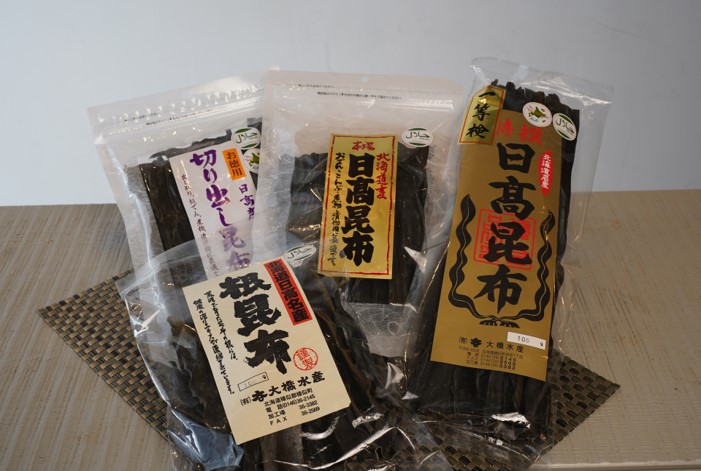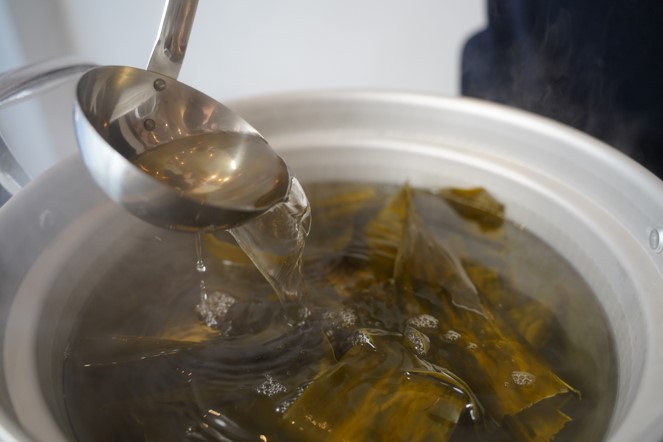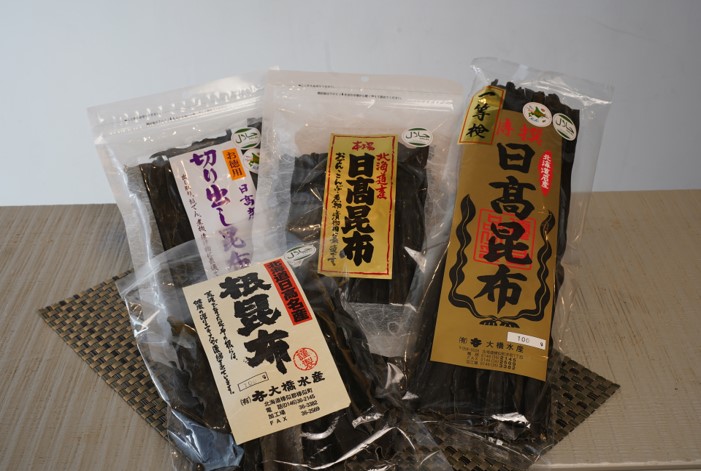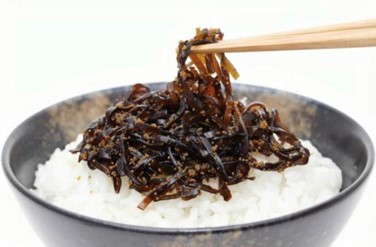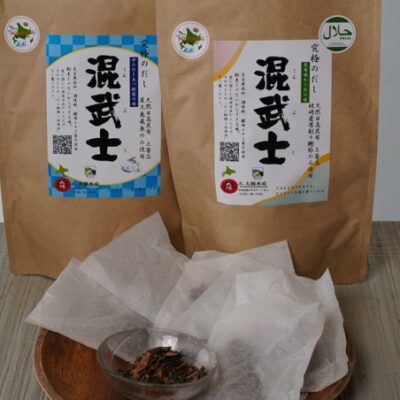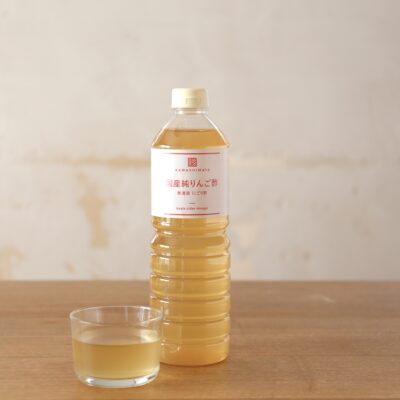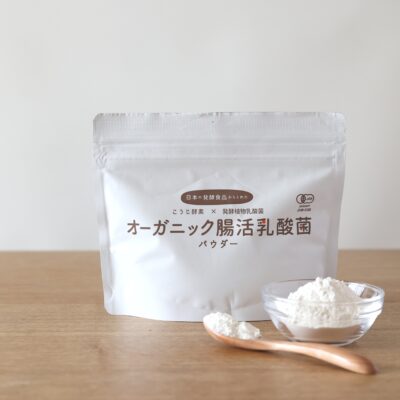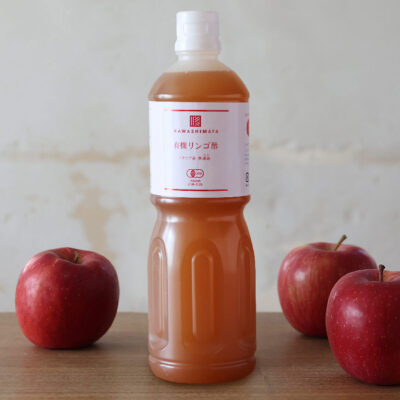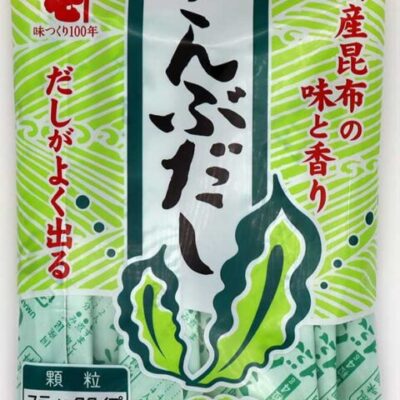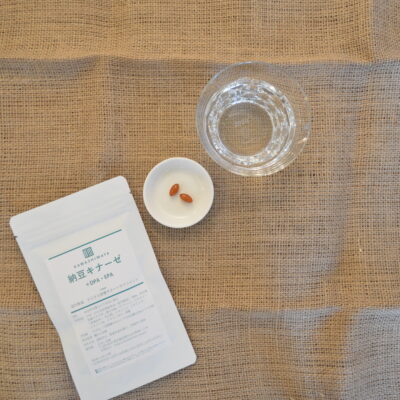Hidaka Kelp the first grade

Hidaka kelp is 100% natural and is divided into many parts such as cut kelp and root kelp. Root kelp is the most nutritious among kelps and is ideal for making dashi, while cut kelp is considered best for oden and simmered dishes. Among them, the first-grade kelp has a large amount of dashi per piece, is thick, and is a very delicious top-quality product. There are many types of kelp in Hokkaido, but Hidaka kelp is known as “dashi kelp” because of its strong sweetness and dashi flavor, making it suitable for various Japanese dishes including, Japanese cuisine, soba and udon.
The slimy component of kelp is a water-soluble dietary fiber that helps regulate the intestinal environment, and the glutamic acid contained in kelp is expected to have various effects and benefits beyond just umami flavor. Glutamic acid, which acts as an excitatory neurotransmitter, is said to activate the brain. This function is believed to enhance memory and learning abilities. Furthermore, kelp contains seven times more calcium than milk. Calcium is a necessary nutrient for building bones, so sufficient intake is desired not only for children in their growth period but also for generations concerned about osteoporosis. Additionally, potassium is present in kelp at 43 times the amount found in milk. Potassium mainly exists in intracellular fluid and is an important nutrient involved in regulating blood pressure, cellular metabolism, and the functions of nerves and muscles. Moreover, potassium helps excrete salt from the body, which lowers blood pressure, making it a nutrient we should actively consume as we seek to reduce salt intake. In this way, kelp is a food that contributes to the prevention of lifestyle-related diseases and other health improvements.
The slimy component of kelp is a water-soluble dietary fiber that helps regulate the intestinal environment, and the glutamic acid contained in kelp is expected to have various effects and benefits beyond just umami flavor. Glutamic acid, which acts as an excitatory neurotransmitter, is said to activate the brain. This function is believed to enhance memory and learning abilities. Furthermore, kelp contains seven times more calcium than milk. Calcium is a necessary nutrient for building bones, so sufficient intake is desired not only for children in their growth period but also for generations concerned about osteoporosis. Additionally, potassium is present in kelp at 43 times the amount found in milk. Potassium mainly exists in intracellular fluid and is an important nutrient involved in regulating blood pressure, cellular metabolism, and the functions of nerves and muscles. Moreover, potassium helps excrete salt from the body, which lowers blood pressure, making it a nutrient we should actively consume as we seek to reduce salt intake. In this way, kelp is a food that contributes to the prevention of lifestyle-related diseases and other health improvements.
- Product Name
- Hidaka Kelp the first grade
- Ingredients
- Hidaka Kelp best grade, Hidaka, Root Kelp, Cut kelp
- Contents
- 60g ~ 1kg
- Best date before
- 365 days
- Storage method
- Keep in cool, dry place
- Processor
- Ohashi Suisan Co. 〒058-0026 Hokkaido Samanicho Honmachi 1-15
COMPANY
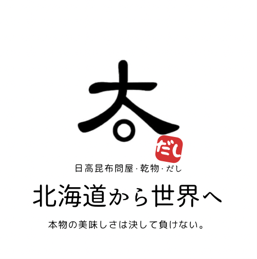
- Company
- Ohashi Suisan Co., Ltd.
- Address
- 1-15 Honmachi, Samani Town, Samani District, Hokkaido, 058-0026, Japan.
- TEL
- +81-146-36-2145
- Web site
- https://www.ohashisuisan.com/


